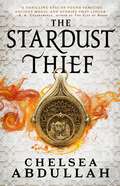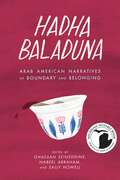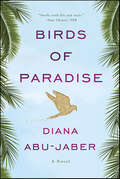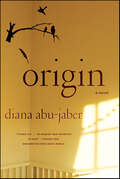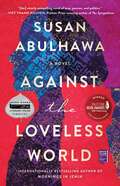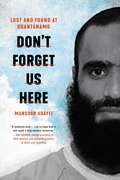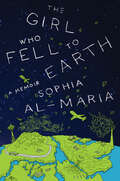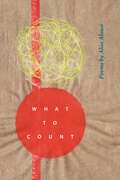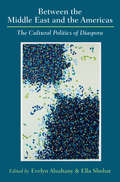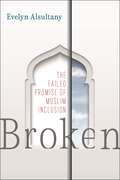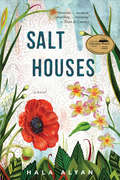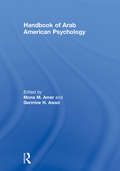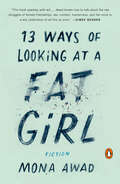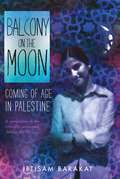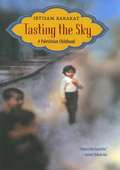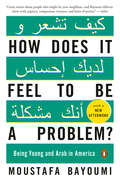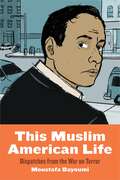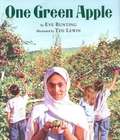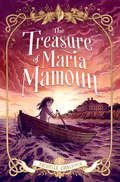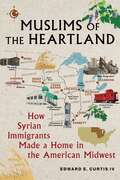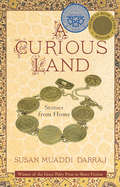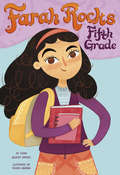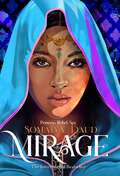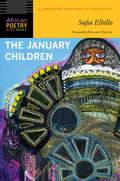Special Collections
Arab American Book Award
- Table View
- List View
The Stardust Thief
by Chelsea AbdullahInspired by stories from One Thousand and One Nights, this book weaves together the gripping tale of a legendary smuggler, a cowardly prince, and a dangerous quest across the desert to find a legendary, magical lamp.Neither here nor there, but long ago . . . Loulie al-Nazari is the Midnight Merchant: a criminal who, with the help of her jinn bodyguard, hunts and sells illegal magic. When she saves the life of a cowardly prince, she draws the attention of his powerful father, the sultan, who blackmails her into finding an ancient lamp that has the power to revive the barren land—at the cost of sacrificing all jinn.With no choice but to obey or be executed, Loulie journeys with the sultan's oldest son to find the artifact. Aided by her bodyguard, who has secrets of his own, they must survive ghoul attacks, outwit a vengeful jinn queen, and confront a malicious killer from Loulie's past. And, in a world where story is reality and illusion is truth, Loulie will discover that everything—her enemy, her magic, even her own past—is not what it seems, and she must decide who she will become in this new reality.
Hadha Baladuna
by Nabeel Abraham and Sally Howell and Dunya Mikhail and Yousef Alqamoussi and Teri Bazzi and Hayan Charara and Mai Jakubowski and Jeff Karoub and Rania Matar and Geri Alumit Zeldes and Hanan Ali Nasser and Yasmine Rukia and Kamelya Omayma Youssef and Ghassan ZeineddineHadha Baladuna: Arab American Narratives of Boundary and Belonging begins with stories of immigration and exile by following newcomers’ attempts to assimilate into American society. Editors Ghassan Zeineddine, Nabeel Abraham, and Sally Howell have assembled a cast of emerging and established writers who examine notions of home, belonging, and citizenship from a wide array of communities, including cultural heritages originating from Lebanon, Palestine, Iraq, and Yemen. The strong pattern in Arab Detroit today is to oppose marginalization through avid participation in almost every form of American identity-making. This engaged stance is not a byproduct of culture, but a new way of thinking about the US in relation to one’s homeland. Hadha Baladuna ("this is our country") is the first work of creative nonfiction in the field of Arab American literature that focuses entirely on the Arab diaspora in Metro Detroit, an area with the highest concentration of Arab Americans in the US. Narratives move from a young Lebanese man in the early 1920s peddling his wares along country roads to an aspiring Iraqi-Lebanese poet who turns to the music of Tupac Shakur for inspiration. The anthology then pivots to experiences growing up Arab American in Detroit and Dearborn, capturing the cultural vibrancy of urban neighborhoods and dramatizing the complexity of what it means to be Arab, particularly from the vantage point of biracial writers. Included in these works is a fearless account of domestic and sexual abuse and a story of a woman who comes to terms with her queer identity in a community that is not entirely accepting. The volume also includes photographs from award-winning artist Rania Matar that present heterogenous images of Arab American women set against the arresting backdrop of Detroit. The anthology concludes with explorations of political activism dating back to the 1960s and Dearborn’s shifting demographic landscape. Hadha Baladuna will shed light on the shifting position of Arab Americans in an era of escalating tension between the United States and the Arab region. It is intended for any reader hoping to learn more from the creative voices of Arab America.
Birds of Paradise
by Diana Abu-Jaber“A full-course meal, a rich, complex and memorable story that will leave you lingering gratefully at [Abu-Jaber’s] table.”—Ron Charles, Washington Post At thirteen, Felice Muir ran away from home to punish herself for some horrible thing she had done—leaving a hole in the hearts of her pastry-chef mother, her real estate attorney father, and her foodie-entrepreneurial brother. After five years of scrounging for food, drugs, and shelter on Miami Beach, Felice is now turning eighteen, and she and the family she left behind must reckon with the consequences of her actions—and make life-affirming choices about what matters to them most, now and in the future.
Origin
by Diana Abu-Jaber"Finally, a novel of literary suspense that gets almost everything right—forensically and psychologically." —Sarah Weinman, Baltimore SunSecretly, in her heart of hearts, Lena Dawson hides the strangest of beliefs about her childhood. Hiding behind a cool competence as a superb fingerprint analyst in a crime lab in snowy Syracuse, New York, she feels totally out of place in the ordinary world of human interaction. Especially since the controlling husband who guided and protected her, then cheated and left her (though now he wants her back). Her uncanny ability to read a crime scene draws her into investigating a mysterious series of crib deaths—but ultimately the most difficult puzzle she must solve is the one of her own origins.Diana Abu-Jaber, a “gifted and graceful writer” (Chicago Tribune), masterfully “transcends formula” (Kirkus Reviews) as “the tension of Origin escalates, shaped as much by beautifully nuanced prose as menacing events” (New York Daily News).
Against the Loveless World
by Susan AbulhawaFrom the internationally bestselling author of the “terrifically affecting” (The Philadelphia Inquirer) Mornings in Jenin, a sweeping and lyrical novel that follows a young Palestinian refugee as she slowly becomes radicalized while searching for a better life for her family throughout the Middle East. For readers of international literary bestsellers including Washington Black, My Sister, The Serial Killer, and Her Body and Other Parties.
As Nahr sits, locked away in solitary confinement, she spends her days reflecting on the dramatic events that landed her in prison in a country she barely knows. Born in Kuwait in the 70s to Palestinian refugees, she dreamed of falling in love with the perfect man, raising children, and possibly opening her own beauty salon. Instead, the man she thinks she loves jilts her after a brief marriage, her family teeters on the brink of poverty, she’s forced to prostitute herself, and the US invasion of Iraq makes her a refugee, as her parents had been. After trekking through another temporary home in Jordan, she lands in Palestine, where she finally makes a home, falls in love, and her destiny unfolds under Israeli occupation.
Nahr’s subversive humor and moral ambiguity will resonate with fans of My Sister, The Serial Killer, and her dark, contemporary struggle places her as the perfect sister to Carmen Maria Machado’s Her Body and Other Parties. Written with Susan Abulhawa’s distinctive “richly detailed, beautiful, and resonant” (Publishers Weekly) prose, this powerful novel presents a searing, darkly funny, and wholly unique portrait of a Palestinian woman who refuses to be a victim.
Don't Forget Us Here
by Mansoor AdayfiThis moving, eye-opening memoir of an innocent man detained at Guantánamo Bay for fifteen years tells a story of humanity in the unlikeliest of places and an unprecedented look at life at Guantánamo.At the age of 18, Mansoor Adayfi left his home in Yemen for a cultural mission to Afghanistan. He never returned. Kidnapped by warlords and then sold to the US after 9/11, he was disappeared to Guantánamo Bay, where he spent the next 15 years as Detainee #441.Don't Forget Us Here tells two coming-of-age stories in parallel: a makeshift island outpost becoming the world's most notorious prison and an innocent young man emerging from its darkness. Arriving as a stubborn teenager, Mansoor survived the camp's infamous interrogation program and became a feared and hardened resistance fighter leading prison riots and hunger strikes. With time though, he grew into the man prisoners nicknamed "Smiley Troublemaker": a student, writer, and historian. With unexpected warmth and empathy, he unwinds a narrative of fighting for hope and survival in unimaginable circumstances, illuminating the limitlessness of the human spirit. And through his own story, Mansoor also tells Guantánamo's story, offering an unprecedented window into one of the most secretive places on earth and the people—detainees and guards alike—who lived there with him. Twenty years later, Guantánamo remains open, and at a moment of due reckoning, Mansoor Adayfi helps us understand what actually happened there—both the horror and the beauty—a vital chronicle of an experience we cannot afford to forget.
A Kid's Guide to Arab American History
by Yvonne Wakim Dennis and Maha AddasiMany Americans, educators included, mistakenly believe all Arabs share the same culture, language, and religion, and have only recently begun immigrating to the United States.
A Kid's Guide to Arab American History dispels these and other stereotypes and provides a contemporary as well as historical look at the people and experiences that have shaped Arab American culture.
Each chapter focuses on a different group of Arab Americans including those of Lebanese, Syrian, Palestinian, Jordanian, Egyptian, Iraqi, and Yemeni descent and features more than 50 fun activities that highlight their distinct arts, games, clothing, and food.
Kids will love dancing the dabke, constructing a derbekke drum, playing a game of senet, making hummus, creating an arabesque design, and crafting an Egyptian-style cuff bracelet. Along the way they will learn to count in Kurdish, pick up a few Syrian words for family members, learn a Yemeni saying, and speak a little Iraqi.
Short biographies of notable Arab Americans, including actor and philanthropist Danny Thomas, singer Paula Abdul, artist Helen Zughaib, and activist Ralph Nader, demonstrate a wide variety of careers and contributions.
The Girl Who Fell to Earth
by Sophia Al-MariaAward-winning filmmaker and writer Sophia Al-Maria’s The Girl Who Fell to Earth is a funny and wry coming-of-age memoir about growing up in between American and Gulf Arab cultures. Part family saga and part personal quest, The Girl Who Fell to Earth traces Al-Maria’s journey to make a place for herself in two different worlds.When Sophia Al-Maria's mother sends her away from rainy Washington State to stay with her husband's desert-dwelling Bedouin family in Qatar, she intends it to be a sort of teenage cultural boot camp. What her mother doesn't know is that there are some things about growing up that are universal. In Qatar, Sophia is faced with a new world she'd only imagined as a child. She sets out to find her freedom, even in the most unlikely of places.The Girl Who Fell to Earth takes readers from the green valleys of the Pacific Northwest to the dunes of the Arabian Gulf and on to the sprawling chaos of Cairo. Struggling to adapt to her nomadic lifestyle, Sophia is haunted by the feeling that she is perpetually in exile: hovering somewhere between two families, two cultures, and two worlds. She must make a place for herself—a complex journey that includes finding young love in the Arabian Gulf, rebellion in Cairo, and, finally, self-discovery in the mountains of Sinai.The Girl Who Fell to Earth heralds the arrival of an electric new talent and takes us on the most personal of quests: the voyage home.
What to Count
by Alise AlousiWith heart and insight, the poems in Alise Alousi’s What to Count speak to what it means to come of age as an Iraqi American during the first Gulf War and its continuing aftermath, but also to the joy and complexity of motherhood, daughterhood, and what it means to live a creative life. More than a description of the world, Alousi’s poetry actively lives in and of the world. These poems explore the nuances of memory through the changes wrought by time, conflict, and distance. In "The Ocularist" and "Art," and others, Alousi’s extraordinary verbal deftness precisely locates the still-tender pains and triumphs of collective being while trying to be an individual in the world. What to Count is a remarkable collection of contemporary poetry—both a lyrical splendor and a contemplative account of lineage, silenced history, and identity.
Between the Middle East and the Americas
by Ella and Alsultany and Evelyn and ShohatBetween the Middle East and the Americas: The Cultural Politics of Diaspora traces the production and circulation of discourses about "the Middle East" across various cultural sites, against the historical backdrop of cross-Atlantic Mahjar flows. The book highlights the fraught and ambivalent situation of Arabs/Muslims in the Americas, where they are at once celebrated and demonized, integrated and marginalized, simultaneously invisible and spectacularly visible. The essays cover such themes as Arab hip-hop's transnational imaginary; gender/sexuality and the Muslim digital diaspora; patriotic drama and the media's War on Terror; the global negotiation of the Prophet Mohammad cartoons controversy; the Latin American paradoxes of Turcophobia/Turcophilia; the ambiguities of the bellydancing fad; French and American commodification of Rumi spirituality; the reception of Iranian memoirs as cultural domestication; and the politics of translation of Turkish novels into English. Taken together, the essays analyze the hegemonic discourses that position "the Middle East" as a consumable exoticized object, while also developing complex understandings of self-representation in literature, cinema/TV, music, performance, visual culture, and digital spaces. Charting the shifting significations of differing and overlapping forms of Orientalism, the volume addresses Middle Eastern diasporic practices from a transnational perspective that brings postcolonial cultural studies methods to bear on Arab American studies, Middle Eastern studies, and Latin American studies. Between the Middle East and the Americas disentangles the conventional separation of regions, moving beyond the binarist notion of "here" and "there" to imaginatively reveal the thorough interconnectedness of cultural geographies.
Broken
by Evelyn AlsultanyPROSE Award- Media and Cultural Studies FinalistHow diversity initiatives end up marginalizing Arab Americans and US Muslims One of Donald Trump’s first actions as President was to sign an executive order to limit Muslim immigration to the United States, a step toward the “complete shutdown of Muslims entering the United States” he had campaigned on. This extraordinary act of Islamophobia provoked unprecedented opposition: Hollywood movies and mainstream television shows began to feature more Muslim characters in contexts other than terrorism; universities and private businesses included Muslims in their diversity initiatives; and the criminal justice system took hate crimes against Muslims more seriously. Yet Broken argues that, even amid this challenge to institutionalized Islamophobia, diversity initiatives fail on their promise by only focusing on crisis moments.Evelyn Alsultany argues that Muslims get included through “crisis diversity,” where high-profile Islamophobic incidents are urgently responded to and then ignored until the next crisis. In the popular cultural arena of television, this means interrogating even those representations of Muslims that others have celebrated as refreshingly positive. What kind of message does it send, for example, when a growing number of “good Muslims” on TV seem to have arrived there, ironically, only after leaving the faith? In the realm of corporations, she critically examines the firing of high-profile individuals for anti-Muslim speech—a remedy that rebrands corporations as anti-racist while institutional racism remains intact. At universities, Muslim students get included in diversity, equity, and inclusion plans but that gets disrupted if they are involved in Palestinian rights activism. Finally, she turns to hate crime laws revealing how they fail to address root causes. In each of these arenas, Alsultany finds an institutional pattern that defangs the promise of Muslim inclusion, deferring systemic change until and through the next “crisis.”
Salt Houses
by Hala AlyanOn the eve of her daughter Alia’s wedding, Salma reads the girl’s future in a cup of coffee dregs. She sees an unsettled life for Alia and her children; she also sees travel, and luck. While she chooses to keep her predictions to herself that day, they will all soon come to pass when the family is uprooted in the wake of the Six-Day War of 1967.
Salma is forced to leave her home in Nablus; Alia’s brother gets pulled into a politically militarized world he can’t escape; and Alia and her gentle-spirited husband move to Kuwait City, where they reluctantly build a life with their three children.
When Saddam Hussein invades Kuwait in 1990, Alia and her family once again lose their home, their land, and their story as they know it, scattering to Beirut, Paris, Boston, and beyond.
Soon Alia’s children begin families of their own, once again navigating the burdens (and blessings) of assimilation in foreign cities.
Lyrical and heartbreaking, Salt Houses is a remarkable debut novel that challenges and humanizes an age-old conflict we might think we understand—one that asks us to confront that most devastating of all truths: you can’t go home again.
Handbook of Arab American Psychology
by Germine H. Awad and Mona M. AmerThe Handbook of Arab American Psychology is the first major publication to comprehensively discuss the Arab American ethnic group from a lens that is primarily psychological. This edited book contains a comprehensive review of the cutting-edge research related to Arab Americans and offers a critical analysis regarding the methodologies and applications of the scholarly literature. It is a landmark text for both multicultural psychology as well as for Arab American scholarship. Considering the post 9/11 socio-political context in which Arab Americans are under ongoing scrutiny and attention, as well as numerous misunderstandings and biases against this group, this text is timely and essential. Chapters in the Handbook of Arab American Psychology highlight the most substantial areas of psychological research with this population, relevant to diverse sub-disciplines including cultural, social, developmental, counseling/clinical, health, and community psychologies. Chapters also include content that intersect with related fields such as sociology, American studies, cultural/ethnic studies, social work, and public health. The chapters are written by distinguished scholars who merge their expertise with a review of the empirical data in order to provide the most updated presentation of scholarship about this population. The Handbook of Arab American Psychology offers a noteworthy contribution to the field of multicultural psychology and joins references on other racial/ethnic minority groups, including Handbook of African American Psychology, Handbook of Asian American Psychology, Handbook of U.S. Latino Psychology, and The Handbook of Chicana/o Psychology and Mental Health.
13 Ways of Looking at a Fat Girl
by Mona AwadGrowing up in the suburban hell of Misery Saga (a.k.a. Mississauga), Lizzie has never liked the way she looks--even though her best friend Mel says she's the pretty one. She starts dating guys online, but she's afraid to send pictures, even when her skinny friend China does her makeup: she knows no one would want her if they could really see her. So she starts to lose.
With punishing drive, she counts almonds consumed, miles logged, pounds dropped. She fights her way into coveted dresses. She grows up and gets thin, navigating double-edged validation from her mother, her friends, her husband, her reflection in the mirror. But no matter how much she loses, will she ever see herself as anything other than a fat girl?
In her brilliant, hilarious, and at times shocking debut, Mona Awad simultaneously skewers the body image-obsessed culture that tells women they have no value outside their physical appearance, and delivers a tender and moving depiction of a lovably difficult young woman whose life is hijacked by her struggle to conform.
As caustically funny as it is heartbreaking, 13 Ways of Looking at a Fat Girl introduces a vital new voice in fiction.
Balcony on the Moon
by Ibtisam BakaratPicking up where Tasting the Sky left off, Balcony on the Moon follows Ibtisam Barakat through her childhood and adolescence in Palestine from 1972-1981 and chronicles her desire to be a writer. Ibtisam finds inspiration through writing letters to pen pals and from an adult who encourages her to keep at it, but the most surprising turn of all for Ibtisam happens when her mother decides that she would like to seek out an education, too. This memoir is a touching, at times funny, and enlightening look at the not often depicted daily life in a politically tumultuous area. A Margaret Ferguson Book
Tasting the Sky
by Ibtisam BarakatIn this powerful, groundbreaking memoir, Ibtisam Barakat captures what it is like to be a child whose world is shattered by war.
How Does It Feel to Be a Problem?
by Moustafa BayoumiAn eye-opening look at how young Arab- and Muslim- Americans are forging lives for themselves in a country that often mistakes them for the enemy Just over a century ago , W.E.B. Du Bois posed a probing question in his classic The Souls of Black Folk: How does it feel to be a problem? Now, Moustafa Bayoumi asks the same about America's new "problem"-Arab- and Muslim-Americans. Bayoumi takes readers into the lives of seven twenty-somethings living in Brooklyn, home to the largest Arab-American population in the United States. He moves beyond stereotypes and clichés to reveal their often unseen struggles, from being subjected to government surveillance to the indignities of workplace discrimination. Through it all, these young men and women persevere through triumphs and setbacks as they help weave the tapestry of a new society that is, at its heart, purely American.
This Muslim American Life
by Moustafa BayoumiWinner of the 2016 Evelyn Shakir Non-Fiction Arab American Book AwardA collection of insightful and heartbreaking essays on Muslim-American life after 9/11Over the last few years, Moustafa Bayoumi has been an extra in Sex and the City 2 playing a generic Arab, a terrorist suspect (or at least his namesake “Mustafa Bayoumi” was) in a detective novel, the subject of a trumped-up controversy because a book he had written was seen by right-wing media as pushing an “anti-American, pro-Islam” agenda, and was asked by a U.S. citizenship officer to drop his middle name of Mohamed.Others have endured far worse fates. Sweeping arrests following the terrorist attacks of September 11, 2001 led to the incarceration and deportation of thousands of Arabs and Muslims, based almost solely on their national origin and immigration status. The NYPD, with help from the CIA, has aggressively spied on Muslims in the New York area as they go about their ordinary lives, from noting where they get their hair cut to eavesdropping on conversations in cafés. In This Muslim American Life, Moustafa Bayoumi reveals what the War on Terror looks like from the vantage point of Muslim Americans, highlighting the profound effect this surveillance has had on how they live their lives. To be a Muslim American today often means to exist in an absurd space between exotic and dangerous, victim and villain, simply because of the assumptions people carry about you. In gripping essays, Bayoumi exposes how contemporary politics, movies, novels, media experts and more have together produced a culture of fear and suspicion that not only willfully forgets the Muslim-American past, but also threatens all of our civil liberties in the present.
One Green Apple
by Eve Bunting and Ted LewinFarah feels alone, even when surrounded by her classmates. She listens and nods but doesn't speak. It's hard being the new kid in school, especially when you're from another country and don't know the language. Then, on a field trip to an apple orchard, Farah discovers there are lots of things that sound the same as they did at home, from dogs crunching their food to the ripple of friendly laughter. As she helps the class make apple cider, Farah connects with the other students and begins to feel that she belongs.Ted Lewin's gorgeous sun-drenched paintings and Eve Bunting's sensitive text immediately put the reader into another child's shoes in this timely story of a young Muslim immigrant.
The Treasure of Maria Mamoun
by Michelle ChalfounTwelve-year-old Maria lives a lonely, latchkey-kid's life in the Bronx. Her Lebanese mother is working two nursing jobs to keep them afloat, and Maria keeps her worries to herself, not wanting to be a burden. Then something happens one day between home and school that changes everything. Mom whisks them to an altogether different world on Martha's Vineyard, where she's found a job on a seaside estate. While the mysterious bedridden owner--a former film director--keeps her mother busy, Maria has the freedom to explore a place she thought could only exist in the movies. Making friends with a troublesome local character, Maria finds an old sailboat that could make a marvelous clubhouse. She also stumbles upon an old map that she is sure will lead to pirate's plunder--but golden treasure may not be the most valuable thing she discovers for herself this special summer.
Muslims of the Heartland
by Edward E Curtis IVThe surprising history of Muslim life in the American Midwest in the early 20th century. The American Midwest is often thought of as uniformly white, and shaped exclusively by Christian values. However, this view of the region as an unvarying landscape fails to consider a significant community at its very heart. Muslims of the Heartland uncovers the long history of Muslims in a part of the country where many readers would not expect to find them. Edward E. Curtis IV, a descendant of Syrian Midwesterners, vividly portrays the intrepid men and women who busted sod on the short-grass prairies of the Dakotas, peddled needles and lace on the streets of Cedar Rapids, and worked in the railroad car factories of Michigan City. This intimate portrait follows the stories of individuals such as farmer Mary Juma, pacifist Kassem Rameden, poet Aliya Hassen, and bookmaker Kamel Osman from the early 1900s through World War I, the Roaring 20s, the Great Depression, and World War II. Its story-driven approach places Syrian Americans at the center of key American institutions like the assembly line, the family farm, the dance hall, and the public school, showing how the first two generations of Midwestern Syrians created a life that was Arab, Muslim, and American, all at the same time.Muslims of the Heartland recreates what the Syrian Muslim Midwest looked, sounded, felt, and smelled like—from the allspice-seasoned lamb and rice shared in mosque basements to the sound of the trains on the Rock Island Line rolling past the dry goods store. It recovers a multicultural history of the American Midwest that cannot be ignored. Choice Outstanding Academic Title 2023
A Curious Land
by Susan Muaddi DarrajSusan Muaddi Darraj’s short story collection about the inhabitants of a Palestinian West Bank village, Tel al-Hilou, spans generations and continents to explore ideas of memory, belonging, connection, and, ultimately, the deepest and richest meaning of home. A Curious Land gives voice to the experiences of Palestinians in the last century.
An excerpt from A Curious Land:
When Rabab lowered the magad and clapped-clapped to the well in her mother’s too-big slippers, the stone jar digging into her shoulder, she didn’t, at first, see the body. The morning sun glazed everything around her—the cement homes, the iron rails along one wall, the bars on the windows, the stones around the well—and made her squint her itchy eyes.
She was hungry. That was all.
They’d arrived here only last night, stopping as soon as Awwad and the men were sure the army had moved south. It must have been the third time in just a few weeks—collapse the tents, load the mules, disappear into the sands. She hoped this war would end soon, and she didn’t really care who won, as long as it ended because they hadn’t eaten well in two years. In the past few months, her mother had sold all her gold, except for her bracelet made of liras. It was the only thing left, and she was holding onto it, and Rabab realized, so were they all; she imagined that, the day it was sold, when her mother’s wrist was bare, would signal that they were at the end.
Farah Rocks Fifth Grade
by Susan Muaddi DarrajFarah and her best friend, Allie Liu, are getting excited to turn in their applications to the Magnet Academy, where they both hope to attend sixth grade. But when new girl Dana Denver shows up, Farah's world is turned upside down. As Dana starts bullying Farah's little brother, Samir, Farah begins to second-guess her choice to leave him behind at Harbortown Elementary/Middle School. Determined to handle it on her own, Farah comes up with a plan--a plan that involves lying to those closest to her. Will her lies catch up with her, or can Farah find a way to defeat the bully and rock fifth grade?
Mirage
by Somaiya DaudThis “enriching, thrilling, and captivating” (BuzzFeed) Moroccan-inspired debut “has what it takes to be the next big thing in sci-fi/fantasy” (SLJ, starred review)!In a world dominated by the brutal Vathek empire, eighteen-year-old Amani is a dreamer. She dreams of what life was like before the occupation; she dreams of writing poetry like the old-world poems she adores; she dreams of receiving a sign from Dihya that one day, she, too, will have adventure, and travel beyond her isolated home.But when adventure comes for Amani, it is not what she expects: she is kidnapped by the regime and taken in secret to the royal palace, where she discovers that she is nearly identical to the cruel half-Vathek Princess Maram. The princess is so hated by her conquered people that she requires a body double, someone to appear in public as Maram, ready to die in her place.As Amani is forced into her new role, she can’t help but enjoy the palace’s beauty—and her time with the princess’ fiancé, Idris. But the glitter of the royal court belies a world of violence and fear. If Amani ever wishes to see her family again, she must play the princess to perfection...because one wrong move could lead to her death.
The January Children
by Kwame Dawes and Safia ElhilloIn her dedication Safia Elhillo writes, “The January Children are the generation born in Sudan under British occupation, where children were assigned birth years by height, all given the birth date January 1.”
What follows is a deeply personal collection of poems that describe the experience of navigating the postcolonial world as a stranger in one’s own land.
The January Children depicts displacement and longing while also questioning accepted truths about geography, history, nationhood, and home. The poems mythologize family histories until they break open, using them to explore aspects of Sudan’s history of colonial occupation, dictatorship, and diaspora.
Several of the poems speak to the late Egyptian singer Abdelhalim Hafez, who addressed many of his songs to the asmarani—an Arabic term of endearment for a brown-skinned or dark-skinned person. Elhillo explores Arabness and Africanness and the tensions generated by a hyphenated identity in those two worlds. No longer content to accept manmade borders, Elhillo navigates a new and reimagined world.
Maintaining a sense of wonder in multiple landscapes and mindscapes of perpetually shifting values, she leads the reader through a postcolonial narrative that is equally terrifying and tender, melancholy and defiant.
